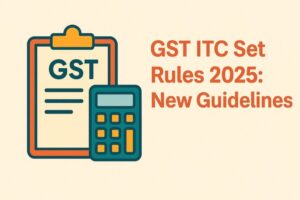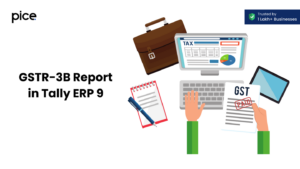GST Registration for Different Business Verticals
- 21 May 25
- 8 mins

GST Registration for Different Business Verticals
- Do You Need Separate GST Registration for All Your Multiple Businesses and Business Verticals?
- What Are the Conditions for Adding Multiple Businesses Under the Same GST Number?
- Step-By-Step Procedure to Add Multiple Businesses Under the Same GST
- Can I Use One GST Number for Multiple Businesses?
- Multiple GST Registration in Different States/GST Registration for Multiple States
- Benefits of Having Multiple Businesses Under One GST Registration
- Legalities and Key Considerations for Adding Multiple Businesses Under One GST
- Conclusion
Key Takeaways
- A single GSTIN can be used to operate multiple business verticals within the same state, simplifying compliance.
- Separate GST registrations are mandatory for business operations across different states or union territories.
- To club businesses under one GSTIN, they must share the same PAN and be located within the same state.
- The process to add businesses under one GSTIN is straightforward and can be done via the GST portal.
- Using one GST registration for multiple businesses reduces paperwork, saves costs, and provides better financial oversight.
As per the CGST law, every supplier of taxable goods and services must register under the GST regime with the respective state or union territory. Certain provisions have been set in the GST framework for obtaining GST registration for different business verticals.
In this blog, you can learn in detail about the GST registration for separate branches of a business entity.
Do You Need Separate GST Registration for All Your Multiple Businesses and Business Verticals?
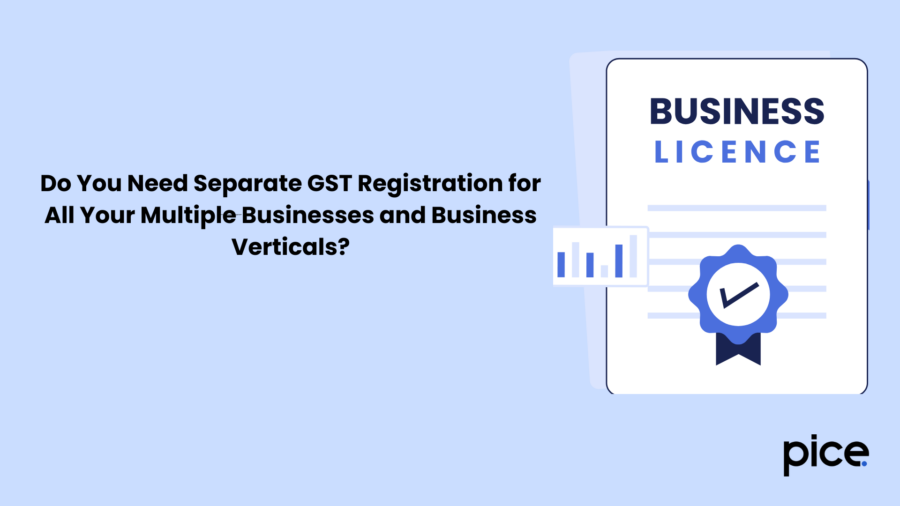
It is possible to run your different businesses, their branches and distinct verticals using the same GST and PAN numbers. Under the GST Act, business owners do not have to avail separate GSTINs for their separate verticals. This concept is stated as Vertical Business in GST.
As per Section 2(18), a business vertical refers to a distinguishable component of an enterprise involved in supplying specific goods, services or related groups, exposed to risks and returns separate from other verticals.
In this case, a person gets the option to run all their businesses under a single GST number or if they want they can apply for separate registrations too. The facility of clubbing businesses is genuinely supportive of business growth and diversification. It has helped many startups and MSMEs grow over the years.
From an entrepreneur’s perspective, this proposition is quite helpful as now they do not have to get caught for a fresh registration time and again. Instead, you can bring all your businesses under a common GSTIN.
What Are the Conditions for Adding Multiple Businesses Under the Same GST Number?
The Central Board of Indirect Taxes and Customs (CBIC) has established certain criteria that allow business owners to add multiple businesses under a single GSTIN. These conditions are:
- The concerned business branches should be in the same state or union territory.
- Any business registered under the GST composition scheme cannot be considered for this facility.
- Tax invoices have to be maintained for every sale made across each registered branch.
Considering these conditions are met, you may add several businesses to your GSTIN.
Step-By-Step Procedure to Add Multiple Businesses Under the Same GST
The procedure of linking your several business entities to a single GSTIN is quite simple. You have to follow these instructions:
Step 1: Visit the official GST portal.
Step 2: Go to the 'Registration' tab and choose the option marked as ‘Amendment of Registration Non-Core Fields’.
Step 3: Next, choose the option ‘Additional Places of Business’.
Step 4: Click on ‘Continue’ to arrive at a new page which will ask you to mention the applicable goods and services.
Step 5: If you deal with goods only then enter the corresponding HSN codes. For services, you have to enter respective SAC codes. Next, click on ‘Save and Continue’.
Step 6: Now, you have to specify some details related to the bank accounts of your businesses.
Step 7: At this stage, you must enter some state-specific details like the tax registration certificate (RC), professional tax employee code and the state excise licence number mentioning the registered person in whose name the licence was issued in the first place.
Step 8: The final task involves verification. For this, you must click on the authentication checkbox and proceed to submit your DSC. Once your details are validated by the Council, your business is automatically added to your existing GSTIN.
Can I Use One GST Number for Multiple Businesses?
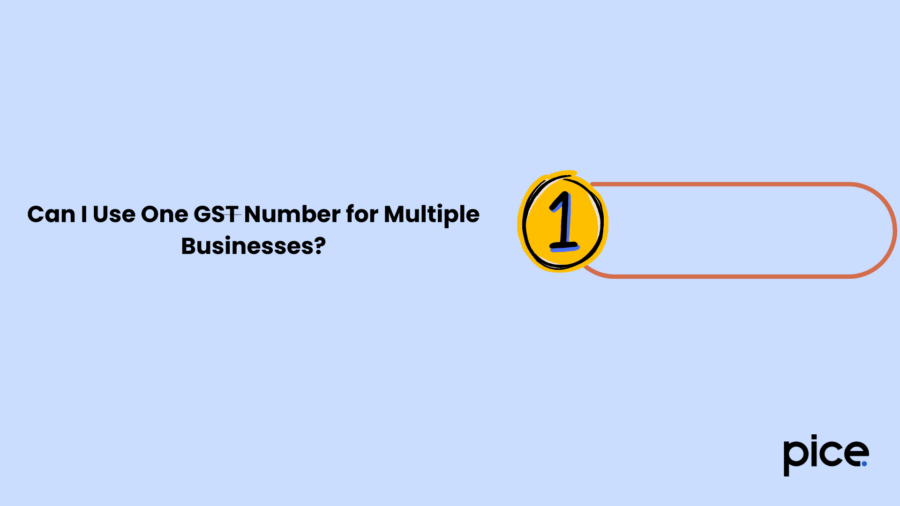
If a person carries out multiple businesses within the same state and their business entities belong to different categories then they can enrol them as different verticals of a single legal entity. At the time of GST registration, you have to specify these different business verticals. This enables smoother compliance as tax filings become a lot easier.
For instance, suppose you run a banquet and a fast food centre in Karnataka under the same company. In this case, you may register both these business verticals under the same GST number. It helps to simplify tax management for the owner.
Multiple GST Registration in Different States/GST Registration for Multiple States
According to the GST Act, when a single business entity persists in different states, each operational unit is held as a separate entity or a ‘distinct person’. Thus, separate records are required for the distinct business verticals based on their geographical location of presence. Simply put, this legal framework requires businesses to obtain a distinct GSTIN for every state in which they operate.
For instance, business units operating in different states like Maharashtra, Delhi and Karnataka are considered distinct entities, each needing a separate GSTIN. This is needed at the time of filing returns and enables state-specific Input Tax Credit (ITC) claims.
Benefits of Having Multiple Businesses Under One GST Registration
Handling multiple business operations simultaneously and claiming their corresponding input tax credits may seem to be a juggling act. Therefore, many prefer to maintain a single GST registration as it makes the operational part a lot easier.
Here are the advantages of having a single GST registration for different business verticals:
- Minimal Paperwork, Less Hassle
As entrepreneurs have to pay taxes under one GSTIN, they can concentrate more on growing their businesses instead of wasting their time on administrative burdens and compliance requirements such as lengthy paperwork and managing tax obligations.
- Save Time and Money
At times, managing more than one GST registration can prove to be time-consuming and costly. Hence, many choose to consolidate their businesses and that’s how they can save resources.
- Superior Overview of the Business Health
When you have a single GST number, you can easily obtain a vivid picture of how each of the branches or verticals is performing. In the long run, it helps maintain clearer financial records and supports smarter financial decisions.
- Uninterrupted Business Expansion
Clubbing multiple business entities and growing the existing ones become quite easy when a person has a well-organised GST registration in place.
Legalities and Key Considerations for Adding Multiple Businesses Under One GST
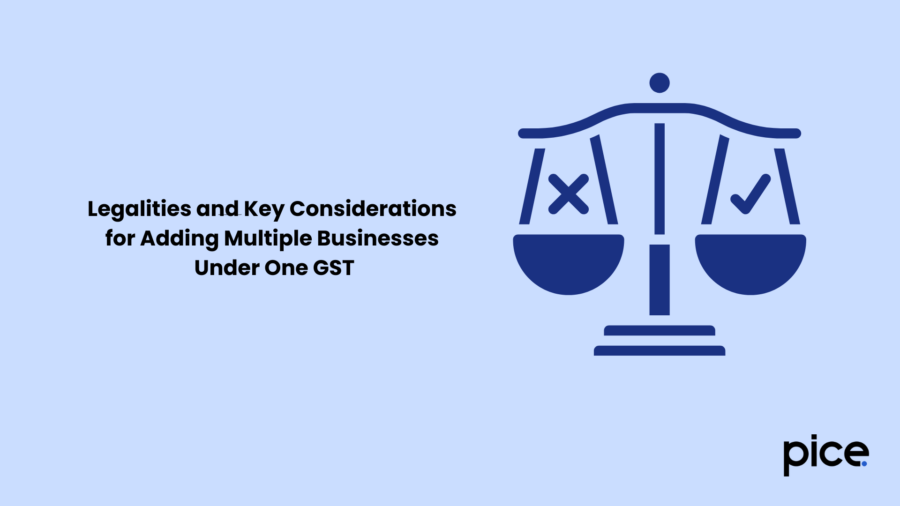
Here are a few factors to keep in mind, especially when you are thinking about bringing different businesses under the same GST number:
- All the businesses need to have the same owner or group of owners.
- The listed businesses must operate within the same state.
- The nature of businesses needs to be somewhat similar.
- The PAN registered with each of the businesses has to be the same.
- GST authorities should have a clear idea about your plans of clubbing multiple businesses
- All the crucial documents, such as business registration certificates, proof of business address and PAN cards, should be kept readily available.
To make the whole procedure simple, you can get expert help. These professionals will enable you to navigate GST matters easily while avoiding ongoing compliance issues.
Conclusion
Now, you must be able to complete the procedure of GST registration for different business verticals in a hassle-free manner. However, to ensure direct tax compliance, you must handle the individual steps timely for which expert guidance can be particularly helpful.
Thus, you can rely on tax professional advice to grow your businesses without facing any complexities in the compliance process.
💡If you want to streamline your invoices and make payments via credit or debit card or UPI, consider using the PICE App. Explore the PICE App today and take your business to new heights.
 By
By 







